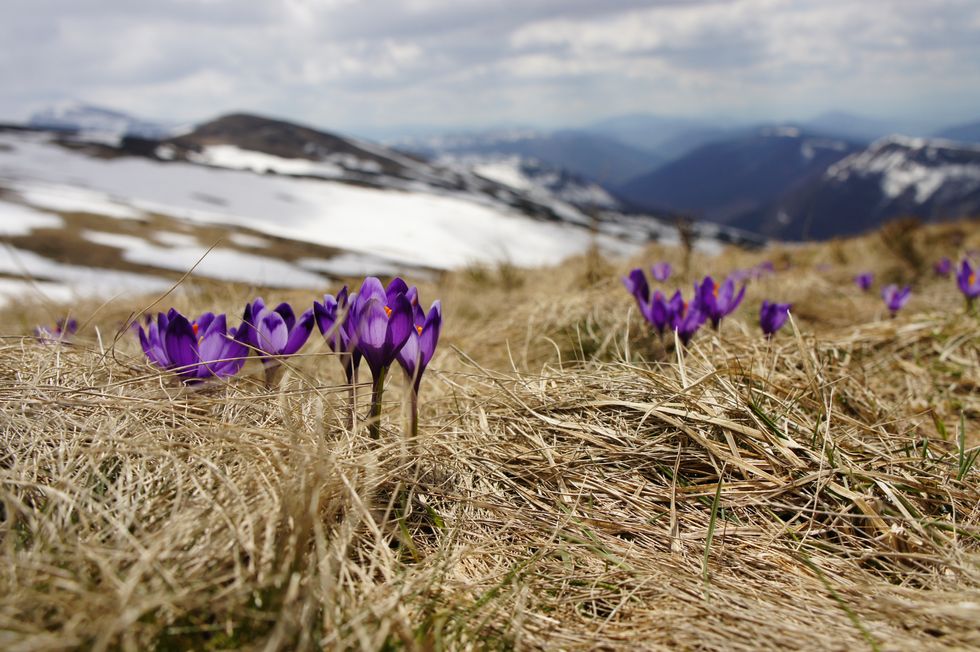According to my calendar, the first day of Spring was March 20th, but a simple look out the window lately makes it very hard to believe that it actually is. So what the heck is responsible for this wacky weather and how are we supposed to know ahead of time what the winter months may bring upon us? A lot of people blame global warming for this unpredictable weather, which may be very true due to all the *scientific evidence* that there is about it, but instead of getting all science-y, we’re going to have some fun by examining all the folklore that was created to predict the weather in the winter months.
1. Woolly Worms.
This little critters, sometimes called woolly bear caterpillars also, have a number of sayings about them when predicting the weather. If there are a large amount of these little buggers during summer, then we should expect a cold winter. Also, if you spot an all black Woolly, that’s also a predictor of a cold winter and if you see an all white one, that’s a predictor of a snowy weather
2. Groundhog.
Right in Punxsutawney, PA on every Groundhog’s Day (Feb. 2nd), you’ll be able to witness America’s most famous groundhog, Punxsutawney Phil predict the upcoming weather depending on if he sees his shadow or not. If Phil sees his shadow and returns to his hole, that means he predicts 6 more weeks of winter weather. If he doesn’t see his shadow, that means he predicts an early spring. Sounds like a lot of pressure to put on a plump groundhog if you ask me! Following this concept, there’s a lot more ways people use animals to predict weather that I’ll get to soon.
3. Foggy August.
If there’s an abundance of foggy mornings in the month of August, then that’s a sign of a hard winter to follow. Some derivations of this legend even go on to say that the amount of foggy mornings in August will be the same amount of days that snowfall occurs.
4. October 9th.
Mark your calendars for October 9th! Supposedly, if the sky is cloudy on this date, that means we’re going to have a milder winter and if it’s sunny, then the winter months are sure to be cold and snowy all season.
5. Acorns.
If there’s an unusual amount of acorns scattered all around then that’s supposed to be a sign of a cold winter. The Farmer’s Almanac, which usually relies on math and science to make its predictions, has also picked up a little bit of acorn lore. It says that if the shells on top of the acorns are thicker than usually, then that means an extra cold winter.
6. Ants.
When insects, specifically ants, are seen marching in a line rather than meandering and scattering around, this is supposedly a sign of a hard winter in the future. Another thing to be on the lookout for is the size of ant mounds. If the walls are build significantly higher than usual, then that’s supposed to also be a predictor of a hard winter too.
7. Hogs.
It is said that hogs will start gathering sticks and straw to make a bed when the upcoming winter is supposed to be a bad one. That bed doesn’t sound too comfortable, but maybe the pig who made his house out of sticks was just trying to warn the other ones about something else after all.
8. Flowers.
April showers may bring May flowers, but what does it mean when the shower is another sheet of snow? It is said that when flowers that usually bloom in the spring bloom again in the fall, that this is another sign of a cold winter.
9. Bees’ hives.
What’s all the buzz about? Supposedly when wasps, hornets, and bees build their nests and hives up higher in the trees, you can expect a severe winter with lots of snow.
10. Weeds.
It is said that the taller the weeds are during the summer, the deeper the snow will be in the winter. Maybe weeds do have some kind of purpose after all...
11. Robins.
It’s said that if you see robins near a house during the fall, the winter will be cold. So depending on if you like the cold or not, a robin in the hood, may or may not be good.














